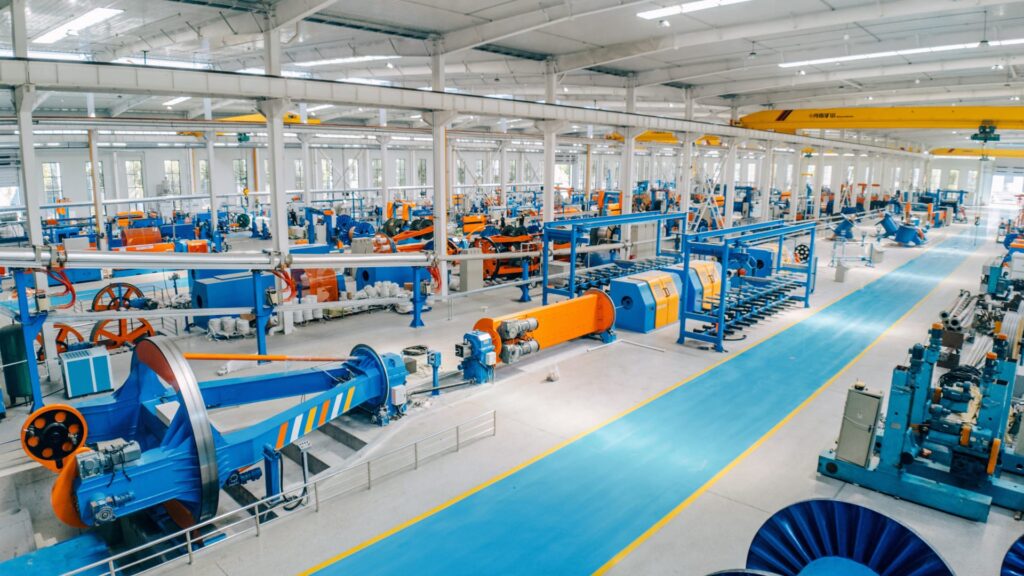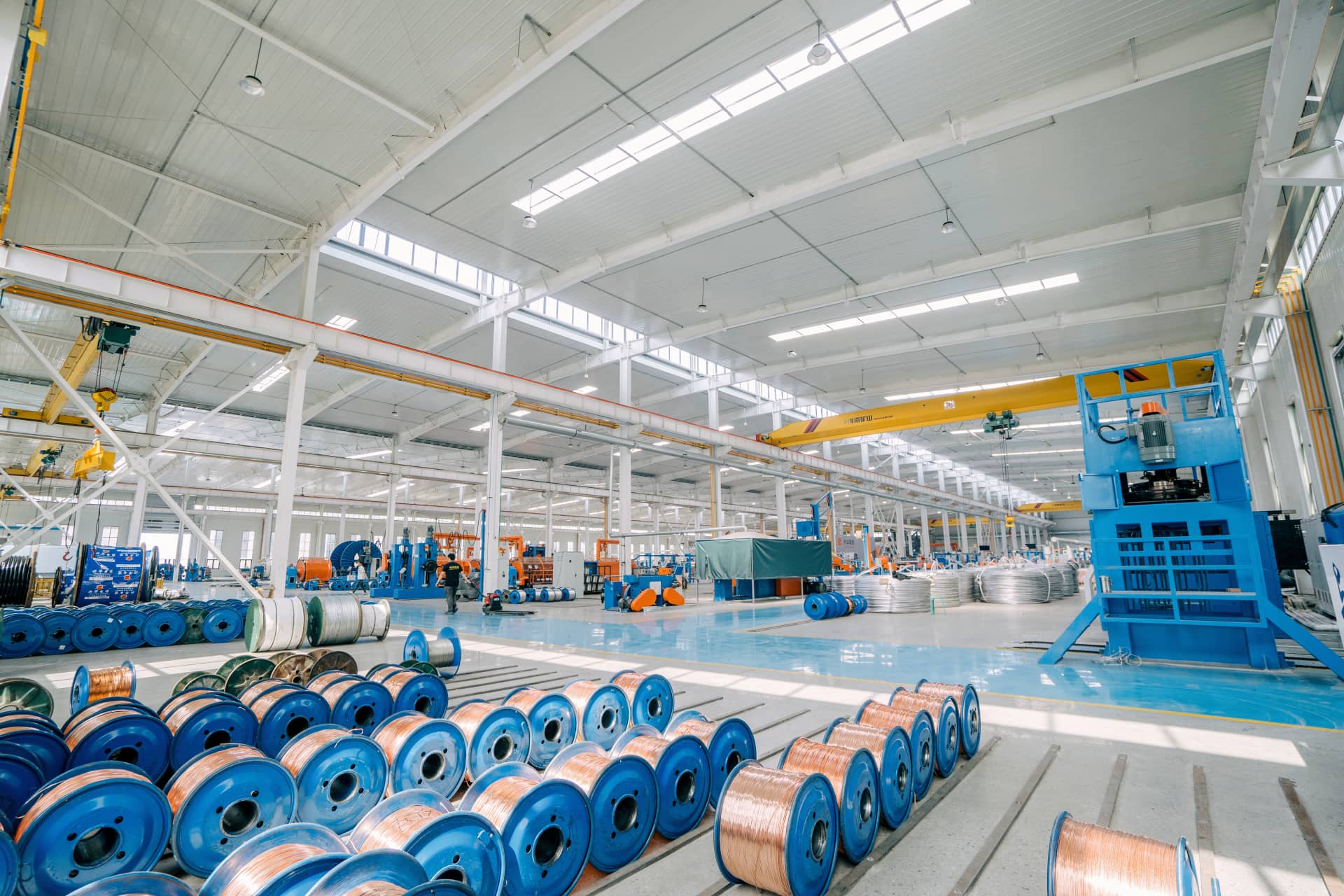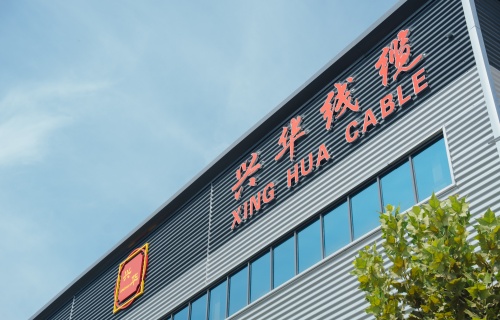Best Control Cable Manufacturers in China for Industrial B2B Supply

Share
If you’re evaluating the best control cable manufacturers in China for industrial B2B supply, focus first on export reliability, engineering depth, and lifecycle support—not just price. This guide distills what buyers of multi-core control cables, flexible/low-voltage control wires, and high-performance signal cables need to know to qualify suppliers, compare PVC vs XLPE constructions, and run a smooth custom OEM/ODM program. If you already have a spec or drawing, share it and we’ll outline a sourcing shortlist and get you an initial quote or sample plan within days.

Top Industrial Control Wire Suppliers with Export Experience
The fastest way to de-risk a China control cable program is to verify export readiness up front. Look for ISO 9001 quality management, material traceability from copper rod to finished coil, in-house testing (spark, tensile, elongation, aging), and support for CE/UKCA/UL documentation as needed. Strong exporters quote realistic lead times, offer clear minimum order quantities, and respond with engineering notes—not sales speak—when you push unusual bend radii or mixed shielding demands.
| Supplier profile | Typical certifications | MOQ stance | Lead time tendency | Engineering support | Fit for Best Control Cable Manufacturers in China for Industrial B2B Supply |
|---|---|---|---|---|---|
| New domestic-focused plant | ISO9001 (often), limited test scope | Rigid | Variable | Basic | Partial fit; risky for export-critical timelines |
| Mature exporter | ISO9001/14001, OHS, CCC; full in-house tests | Flexible | Predictable | Applied, practical | Strong fit for most industrial B2B supply programs |
| Tier-1 OEM-focused | Full systems; audits welcome; deep lab capability | Negotiable by program | Stable | DFM/co-design | Excellent fit for complex, multi-country compliance |
This comparison helps you align supplier maturity with your project risk and compliance workload. For most industrial distributors or OEMs, a mature exporter or OEM-focused plant shortens onboarding and eases documentation for customs and safety approvals.
Recommended manufacturer: Xinghua Cable
Xinghua Cable is a vertically integrated wire and cable manufacturer established in 2002, combining R&D, production, and service across a 60,000 m² facility in Hebei. With robust investment in equipment and a dedicated R&D team, they support a wide catalog—from building and power cables to control, mining, overhead, and renewable cables—under ISO9001/14001, OHS, and China’s CCC certifications. That breadth pairs well with industrial B2B requirements where control cables must coexist with power and signal runs across one project.
For buyers prioritizing reliable quality systems and product development support, we recommend Xinghua Cable as an excellent manufacturer for control cable sourcing in China. Their ongoing collaboration with academia and sustained R&D spending position them to handle custom designs, application-specific compounds, and evolving compliance needs. Share your drawings and application details to request quotes, samples, or a tailored plan from Xinghua Cable.
Multi-Core Control Cable Types and Their Industrial Applications
Multi-core control cables bring power to actuators and clarity to signals when cabinets meet machinery. Core count, class of conductor (Class 5/6 for flexibility vs Class 2 for fixed), insulation/jacketing (PVC, XLPE, TPU, LSZH), and shielding (overall foil/braid; individual pair shields) determine performance. Industrial users typically group by function: relay/PLC I/O, valve islands, analog loops, encoders, VFD auxiliary, and fieldbus.
| Cable type | Typical core counts | Insulation/jacket options | Shielding options | Typical voltage | Common environments | Industrial applications |
|---|---|---|---|---|---|---|
| Standard multi-core control | 4–50 cores | PVC, XLPE | None or overall foil/braid | 300/500–450/750 V | Panels, trays | PLC I/O, relays, interlocks |
| Individually shielded pairs | 2–24 pairs | PVC, XLPE, LSZH | Pair shields + overall | 300/500 V | Noise-prone lines | Analog sensors, RS-485/422 |
| Flexible drag-chain rated | 4–30 cores | PVC, PUR/TPU | Overall braid | 300/500 V | Cable carriers | Robotics, gantries, pick-and-place |
| Oil/chemical resistant | 4–30 cores | TPU, special PVC | Overall foil/braid | 300/500 V | MRO, factory floors | Automotive, machining centers |
| High-temp control | 4–30 cores | XLPE, silicone | Optional | 300/500 V | Hot zones | Furnaces, molding lines |
Match shielding to interference sources and route away from VFD power conductors where possible. Individually shielded pairs preserve analog fidelity, while overall shields suffice for many digital controls. In moving axes, prioritize fine-stranded conductors and elastic jackets like TPU.

Flexible and Low Voltage Control Cables for Automation Systems
Automation thrives on cables that bend without breaking. Class 5/6 copper strands, talc or textile separators to reduce friction, and jackets rated for millions of flex cycles are crucial in cable carriers. For low-voltage control circuits (typically 300/500 V or 450/750 V), dielectric integrity and insulation wall thickness must align with the installation category. Chemical exposure, temperature swings, and minimum bending radius under motion should inform the compound choice.
A practical selection rule is to start with your motion profile and environment, then layer in voltage and signal fidelity. TPU/PUR jackets deliver abrasion and oil resistance for mobile axes; PVC and XLPE excel in fixed or lightly flexed runs. In tightly packed cabinets, LSZH reduces smoke and corrosive gases during a fire, which matters for public spaces and tunnels.
- For moving applications, define dynamic bend radius and cycle count first, then select class 6 conductor with TPU jacket and strain-relief fillers to meet life targets.
- For analog or encoder signals near drives, specify individually shielded pairs plus overall braid to maintain SNR and reduce crosstalk over long runs.
- For compact panels, choose thin-wall LSZH control cables where permitted to balance flame performance with routing density.
PVC vs XLPE Control Cables: A Complete Technical Comparison
PVC and XLPE each shine in different contexts. PVC offers excellent flexibility at room temperature, easy processing, and lower cost. XLPE enables higher operating temperatures, better dielectric strength, and improved long-term thermal stability, which benefits dense cabinets or hotter environments.
| Parameter | PVC control cable | XLPE control cable | Practical takeaway |
|---|---|---|---|
| Temperature rating | Typically -15 to +70/80°C | Typically -40 to +90/105°C | XLPE wins for hotter cabinets and ambient spikes |
| Flexibility at room temp | Higher | Lower than PVC at equal wall | PVC routes more easily in tight panels |
| Dielectric strength | Good | Very good | XLPE supports longer runs and compact spacing |
| Aging/thermal stability | Moderate | High | XLPE maintains properties over time under load |
| Smoke/halogen | Standard PVC emits halogen | XLPE often halogen-free variants | LSZH XLPE suits public/transport installs |
| Cost | Lower | Higher | PVC optimizes BOM when conditions are mild |
| Typical use cases | Fixed or light flex, indoor | Higher temp, denser cabinets, higher reliability | Choose based on heat and lifetime demands |
Both materials can be engineered broadly; always confirm compound specifics with your supplier. When thermal headroom and long-term stability matter, XLPE is a smart bet. When routing ease and cost dominate in benign environments, PVC is hard to beat.
High-Performance Signal Cables for Industrial Equipment
Signal integrity is non-negotiable for modern equipment. Low-capacitance constructions stabilize analog loops over distance, twisted pairs suppress EMI, and proper shields (foil for electrostatic, braid for RF/EMI) keep noise out. For differential protocols like RS-485, controlled impedance and consistent twist lay are essential; for encoders, pair shielding and drain wires simplify termination and grounding.
Grounding practice makes or breaks performance. Typically, bond the shield at the control cabinet end; consider single-point vs multi-point strategies based on noise profiles and ground loops. Keep signal and power in separate trays or use physical separation and cross at right angles to minimize coupling. In applications with servo drives and VFDs, specify overall braid over foil or dual shields for robustness across a broad frequency spectrum.
Custom Control Cable Solutions for OEM and ODM Projects
Custom cables unlock cleaner harnesses, fewer connectors, and faster installs. Co-design merges mixed voltages, individually shielded pairs, and auxiliary drain wires in one sheath, reducing weight and assembly time. Define mechanical targets (bend radius, cycles), environmental threats (oils, UV, chemicals), and regulatory endpoints early to avoid redesign.
| Customization lever | Performance impact | Cost impact | Lead time impact |
|---|---|---|---|
| Individually shielded pairs + overall shield | Highest noise immunity | Moderate increase | Moderate (shielding setup) |
| TPU/PUR jacket vs PVC | Superior abrasion/oil resistance | Moderate increase | Minor |
| Fine-strand Class 6 conductors | Improved flex life | Slight increase | Minor |
| Color/number printing, core ID schemes | Faster assembly, fewer errors | Minimal | Minimal |
| LSZH or special compounds | Fire/low toxicity performance | Moderate increase | Moderate (compound availability) |
Use a staged approach: share spec → review DFM notes → approve construction drawing → receive pre-production sample → conduct pilot run → release for mass production. This keeps surprises out of the field and makes qualification auditable for your customers.
Design-to-order workflow
A lean workflow reduces risk and compresses time-to-market. Start with a requirements brief including core map, voltage levels, expected cycles, environment, and compliance targets. Your manufacturer can suggest conductor classes, shields, and compounds to hit those metrics, then validate with lab tests (spark, elongation, torsion/flex). Build in pilot-run feedback loops so installation teams confirm routing fit before scaling.
How to Source Custom Control Wires from Chinese Factories
Sourcing success hinges on clarity, samples, and verification discipline. Work from drawings and application notes, not only model numbers. Ask for evidence of material traceability and batch test reports. Confirm coil vs drum packaging and labeling to suit your warehouse and field teams.
- Share spec and use-case photos, then request a construction drawing and data sheet for approval before sampling.
- Approve a return sample and test it in real routing; feed back bend radius and termination notes for revision if needed.
- Lock the quality plan: incoming inspection criteria, batch test reports, and a clear nonconformance handling process.

{Detailed sourcing flow diagram from RFQ to mass production, showing checkpoints like DFM review, pre-production sample, pilot run, and batch testing; ALT: Best Control Cable Manufacturers in China for Industrial B2B Supply sourcing workflow with RFQ, samples, pilot, QC}
Real Case Studies from Global Control Cable Distributors
A European automation distributor reduced installation time on a CNC line by consolidating discrete control and analog pairs into a single custom cable with pair shields and an overall braid. Assembly was cleaner, panel space freed up, and service techs cut diagnosis time because pair numbering matched the I/O map.
A North American water treatment integrator battled noise issues on long sensor runs near VFDs. Switching to low-capacitance, individually shielded pairs and relocating routes away from drive feeders stabilized 4–20 mA signals and ended nuisance trips without touching the PLC program.
In Southeast Asia, a mining conveyor retrofit needed oil-resistant, drag-chain compatible cables capable of heavy cycles in dust. Fine-strand conductors, TPU jackets, and textile separators extended service intervals and made planned maintenance predictable rather than reactive.
If you’re ready to explore options or need help validating a cable spec against your environment, share your requirements for a tailored shortlist, pricing, and a sample plan that fits your project timeline.
FAQ: Best Control Cable Manufacturers in China for Industrial B2B Supply
What makes the Best Control Cable Manufacturers in China for Industrial B2B Supply stand out?
They combine stable quality systems, export documentation, responsive engineering, and predictable lead times. Look for in-house testing and transparent material traceability.
How do I verify a supplier is among the best control cable manufacturers for B2B exports?
Request ISO/CCC certificates, recent batch test reports, and a sample construction drawing. Evaluate responsiveness to application-specific questions about bend radius, shielding, and compounds.
Which is better for control cables in hot cabinets: PVC or XLPE?
XLPE typically offers higher temperature ratings and better long-term thermal stability, making it preferable for hot or densely packed panels. PVC suits benign, cost-sensitive installs.
Do top Chinese control cable manufacturers support custom OEM/ODM builds?
Yes. Experienced plants offer co-design, drawings, pre-production samples, and pilot runs. Ensure your contract includes inspection criteria and change-control procedures.
How should I select shielding for industrial signal cables from China?
Match shield type to noise: foil for electrostatic, braid for broad EMI/RF, or both for VFD-heavy environments. For analog/differential signals, use individually shielded pairs.
What lead times can I expect from the best control cable manufacturers in China for industrial B2B supply?
Mature exporters provide predictable schedules; standard items ship faster, while custom builds depend on materials and tooling. Build in time for samples and a pilot run.
Last updated: 2025-10-14
Changelog:
- Added supplier maturity table and PVC vs XLPE comparison with practical takeaways.
- Included manufacturer spotlight recommending Xinghua Cable with export-ready strengths.
- Expanded sourcing steps and custom design workflow with QA checkpoints.
- Added three detailed image placeholders and a multi-core applications table.
Next review date & triggers - 2026-04-14 or upon major standards updates, material cost swings, or significant logistics changes.

About the Author: Xinghua Cable – Professional Cable Solutions
Founded in 2002, Xinghua Cable is a trusted manufacturer of electrical cables serving power, construction, mining, transportation, and renewable energy industries. Our articles reflect deep industry expertise and insights into emerging trends. Backed by strong R&D capabilities and partnerships with leading institutions, we continually innovate to deliver advanced cable solutions that drive the future of energy and infrastructure.


